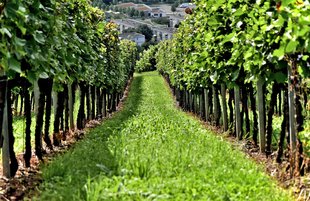All About Organic Wine & Best Bottles to Buy in 2025
Organic wine has become quite a rage recently, thanks to its chemical-free production and overall health benefits.
How is it made? What are the different classifications of organic red wine, whites and sparklers? Which bottles should you buy now?
In this article, we’ll answer all your questions about organic wine including how it’s produced and how it’s different from natural and biodynamic wine.
We’ll also explore the best organic wine bottles you can buy in 2024 and an easy way to invest in collectible wines.
Further reading
- Ready to start investing in some exceptional wines? Begin with this exhaustive guide to Wine Investment.
- Explore these delicious dry red wine bottles and the number of calories you consume with each glass of red.
What is Organic Wine?
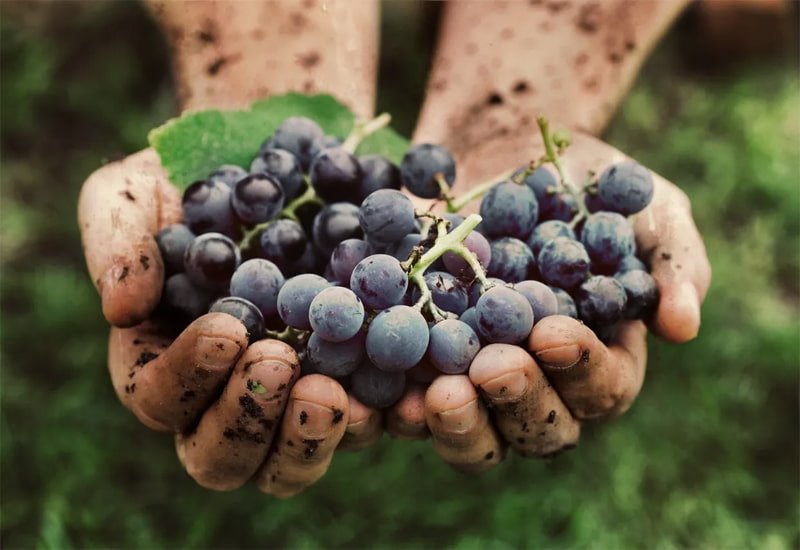
Organic wine is wine produced from organically grown grapes without using chemical additives.
Since organic winemaking avoids animal-based products like egg whites, milk byproducts, or honey, these wines can also be labeled vegan.
Let’s see how organic wine is different from traditional wines.
Organic vs. Conventional Wine
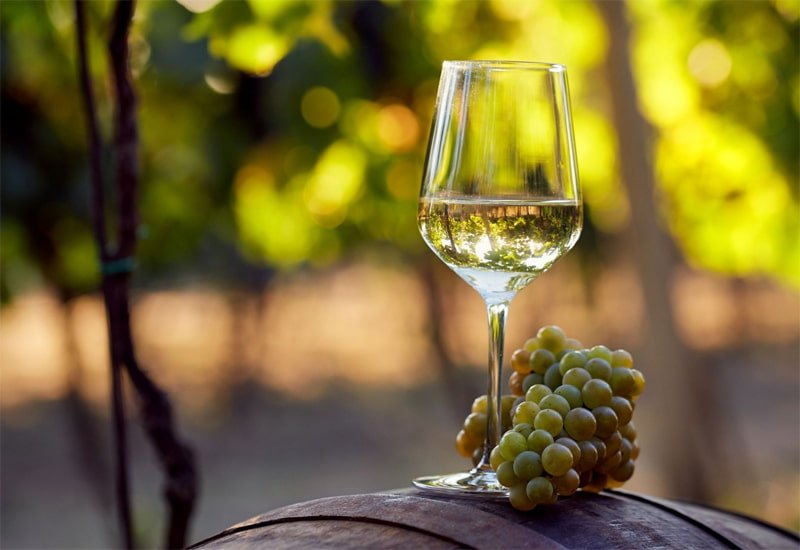
Conventional wine (non-organic wine) production makes use of:
- Chemical fertilizer, pesticide, and herbicides on the grape vines in the vineyard
- GMO yeasts and synthetic preservative ingredients during vinification in the winery
Such conventional practices in the vineyard result in adverse effects like water pollution and health hazards for the vineyard workers.
On the other hand, organic wine is obtained from organic grapes, grown without any inorganic intervention during the grape-growing (organic farming practices) or winemaking stage.
Keen to pick up a bottle of organic wine for yourself?
Let’s explore the best organic wines you can buy in 2024.
Best Organic Wines (Red, White, and Sparkling) to Buy in 2024
Here are some of our favorite organic wines for 2024 categorized as red, white, and sparkling:
1. Organic Red Wines
If you’re a red wine lover, try some of these delectable wines:
A. 2013 Hall Wines Cabernet Sauvignon
This dark garnet Cabernet Sauvignon wine from the Napa Valley wine producer Hall Wines has high acidity and a bouquet of intense dark fruit and rose aromas. This Mendocino wine has a fruity palate with robust tannins.
Price of 2013 Hall Wines Cabernet Sauvignon: $78
B. 2012 Chateau Haut Nouchet (Cabernet Sauvignon - Merlot blend)
This Cabernet Sauvignon - Merlot red blend is an organic product packed with spice, red berries, and smoke aromas. Like Languedoc wines, this wine has red fruit, plum, and cranberry notes. This wine has a high alcohol content of 13.5%.
Price of 2012 Chateau Haut Nouchet: $59
C. 2013 Azienda Agricola Arianna Occhipinti Il Frappato Sicilia IGT
Here we have a delicious gluten-free, organic red wine from Sicily, Italy, that offers cherry, herb, spice, and blood orange aromas. The flavorful palate consists of cardamom, pomegranate, and earthy tasting notes.
Price of 2013 Azienda Agricola Arianna Occhipinti Il Frappato Sicilia IGT: $55
D. 2018 Domaine Carneros Estate Pinot Noir
This Pinot Noir from the California wine producer Domaine Carneros boasts an intense flavor of blackberry. The nose is packed with plum clafouti, cherries, and bergamot tea aromas.
Price of 2018 Domaine Carneros Estate Pinot Noir: $41
E. 2020 Willamette Valley Vineyards Whole Cluster Pinot Noir
This wholesome organic red wine from the Willamette Valley Vineyards organic winery has cherry, red fruit, and vanilla tasting notes. The nose of this Pinot Noir wine is similar to a Chianti and consists of intense blackberry, raspberry, and spice aromas.
Price of 2020 Willamette Valley Vineyards Whole Cluster Pinot Noir: $24
2. Organic White Wine
Two delicious organic white wines are:
A. 2015 Hahn Family Wines Chardonnay
This rich, layered Chardonnay wine has peach aromas and a delicious grapefruit and vanilla taste. It pairs well with various organic food dishes like salad with vinaigrette sauce dressing or pesto chicken with mushrooms.
Price of 2015 Hahn Family Wines Chardonnay: $24
B. 2015 Yalumba Eden Valley Viognier
This Viognier has balanced acidity and an apricot aroma with hints of white flowers and orange oil. The palate is a mix of tangy citrus and stone fruit flavor.
Price of 2015 Yalumba Eden Valley Viognier: $34
3. Organic Sparkling Wine
Two great organic sparkling wines:
A. 2017 Schramsberg Blanc de Blancs
Here’s a delectable Blanc de Blancs with intense aromas of lemon, golden apple, and marzipan. The sparkling wine has a gorgeous apple, lemon, and pineapple flavor and a vibrant finish.
Price of 2017 Schramsberg Blanc de Blancs: $37
B. NV Serge Faust Carte d’Or Brut Champagne
This delightful bubbly has a creamy texture and strong fruit flavor offset by hints of nuts and yeast. This is an exceptional Champagne from the organic winery of Serge Faust.
Price of NV Serge Faust Carte d’Or Brut Champagne: $47
Besides these, you may also find delicious organic wines from varietals like
- Sangiovese
- Syrah
- Malbec
- Tempranillo
- Zinfandel
- Sauvignon Blanc
- Glera (Prosecco)
- And, more!
Let’s explore the classification criteria for organic wine.
Classification of Organic Wine

The National Organic Program (NOP) of the US Department of Agriculture classifies organic wine into two categories (which are usually put on the wine label):
- Wine made with organically grown grapes:The label, ‘made with organically grown grapes’ refers to certified organic wine produced from grapes cultivated in an organic farm without using herbicides or chemical fertilizer additions. These grapes are certified as organic fruit by the USDA.
However, this organic label permits the usage of added sulfites (up to 100 ppm) during the winemaking stage.
- Organic wine: In contrast, ‘organic’ wine refers to wines made from organically grown wine grapes that also use organic ingredients during vinification (organic winemaking).
Though these wines are free of any synthetic preservative ingredients, they still contain trace amounts of natural sulfites.
Only organic wines are allowed to display the USDA organic seal.
As we saw, the winemaker might use some additives like yeast and sulfur dioxide during organic wine production.
This addition of sulfite during fermentation is a contentious issue within the organic wine community.
Many winery owners believe that such chemicals undermine the true ‘organic’ nature of organic wines. But since they help with wine stabilization and shelf life, added sulfites are often indispensable in winemaking.
Fun Fact: Many organic winemakers also produce red wine vinegar. This organic red wine vinegar is used as an exquisite marinade or vinaigrette (salad dressing.)
Now let’s see how organic wines are certified.
Certification of Organic Wine
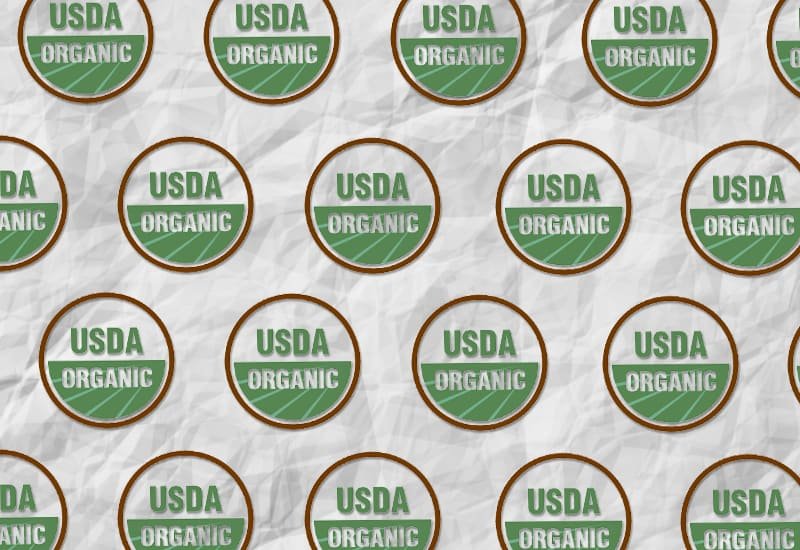
As with organic food, the labeling laws for certified organic wine vary from country to country. Nodal agencies issue guideline information that every winemaker must follow to market their wines as organic.
The NOP, in association with the Alcohol and Tobacco Tax and Trade Bureau, issues organic certification for wines in the US.
The criteria for a wine to be termed as organic are:
- The constituent ingredients must have USDA organic certification.
- Every agricultural item used during winemaking must be a certified organic product.
- Any non-agricultural item must be less than 5% of the total product and must belong to the permissible list of substances.
- The name of the certifying agency on the label is mandatory.
In the European Union (EU), a wine is certified ‘organic’ if:
- It is produced from organic fruit
- It has no more than 100-150 ppm of sulfites
Now we’ll take a look at organic wine production around the world.
Organic Wine Production and Market

Organic wine makes up just 3.7% of the total wine market. The biggest customer base of organic wine is in Germany, France, the UK, the US, Austria, and Argentina.
Countries with the most extensive organic vineyards include Spain (26%), Italy (25%), and France (19%).
In the US, Sonoma County, Napa Valley, and Oregon are increasing their organic wine production. One of the leading US organic wine producers is Bonterra.
Now, with growing organic wine consumption, many related terminologies have cropped up. Let’s look at what these terms mean.
Difference Between Natural, Biodynamic, Sustainable, and Organic Wines
The USDA organic seal on the wine label can help identify an organic wine. However, there are other wine terms like natural, biodynamic, vegan, and sustainable, which often confuse wine consumers.
Even though there are some links between all categories, they are not the same. Here’s what you should know:
1. Natural Wine

Natural wine is a broad term used to define any wine produced with:
- Native yeasts during fermentation
- Minimal human intervention during the winemaking process
This type of wine is unfiltered, which makes it look murky. Natural winemaking also avoids the use of oak barrels in the winery. Conventional winemaking often uses oak barrels.
There is no legal framework to certify natural wines, as in the case of organic wines. Natural wines either made with organic grapes or through organic winemaking can be classified as organic.
Less than 10% of all US organic wines are natural.
2. Biodynamic Wine
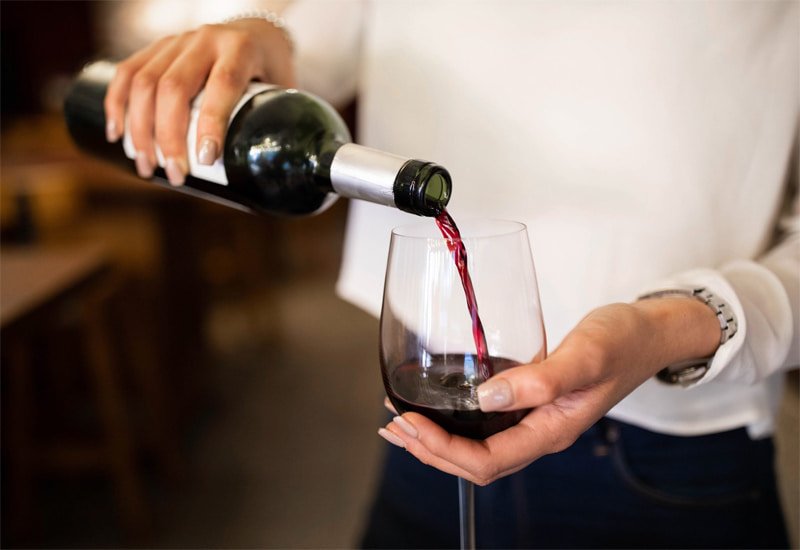
Austrian philosopher Rudolf Steiner introduced the idea of biodynamic farming in the 1920s.
With biodynamic wine, all vineyard operations follow a specific astronomical calendar and organic viticulture practices. Added sulfites of over 100 ppm are allowed during winemaking. So, biodynamic wines are not entirely ‘organic.’
An example of a biodynamic winemaker in the US is Frey wine.
3. Sustainable Wine

Sustainable winemaking prioritizes environment-friendly techniques that don’t compromise winegrowers’ economic and social needs.
The tenets of sustainability are covered in the workbook of the California Sustainable Winegrowing Alliance. The winemaking process has to address all aspects of sustainability, including:
- Economic: Worker pay, vineyard management, wine sales
- Social: Worker health, workforce diversity, and gender equality
- Environmental: Wildlife habitat conservation, climate change, soil health, eco-friendly packaging, and water use
Since economic returns are also paramount, strictly organic ingredients may be forgone if they are not financially sustainable.
Fun fact: Dry Farm Wine is a reputed brand of natural wines. The wines are made with organic grape varietals grown in accordance with the biodynamic farming practices and without any additives. Dry farm wine produces almost every variation of organic wine.
Is Organic Wine Really Better for You Than Regular Wine?

Organic wines offer more health benefits compared to regular wine. Since organic wines use little to no external chemicals, they showcase the best expression of a particular grape and its terroir.
Organic grapes have higher concentrations of anthocyanins and antioxidants. These organic wine grape varietals are also devoid of the chemical aftertaste of conventionally grown grapes.
Organic wine has lower sugar content than non organic wine.
Ever suffered from wine headaches? Organic wines are free of toxic additives like coloring and headache-causing flavoring agents.
Organic wines have a shorter shelf life since only a minimal amount of preservatives is used during the winemaking process.
All set to buy one?
You can always buy a bottle of organic wine from your local wine shop or place an online order from a wine portal, and enjoy it with your dinner.
In case you’re interested in investment-worthy wine bottles for your cellar, you should check out a wine investment portal like Vinovest.
Buy Collectible Wines Through Vinovest
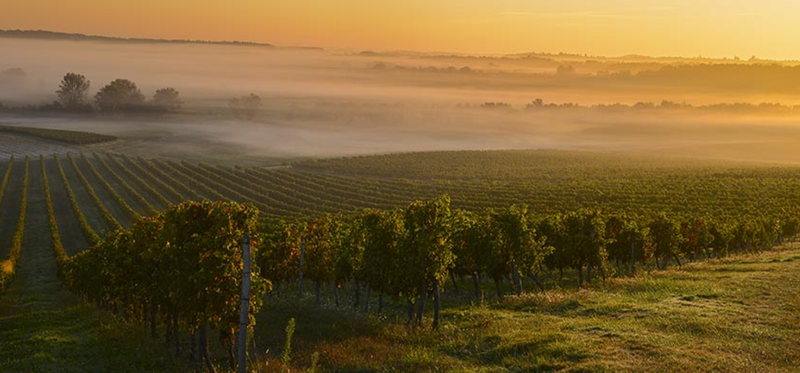
Vinovest is an onlinewine investment platform that assists you in building a high-return portfolio of exquisite wines. You can buy, store, and even sell your favorite wines.
How Does It Work?
- Sign up on the Vinovest website.
- Answer a quick questionnaire to determine your investment style.
- Maintain a minimum balance of $1,000 in your account.
- Start building an enviable wine portfolio while sipping on a glass of Sauvignon Blanc or Chianti!
Benefits
Vinovest provides many advantages like:
1. Easy Buying and Selling Using AI-driven Technology
Vinovest’s Artificial Intelligence-based platform makes it super-convenient to buy and sell your wines from anywhere in the world. You can also have your wines deliveredto your doorstep or to a buyer.
2. Best Prices
Vinovest offers the best price for your favorite bottles since they source their wines directly from trusted winemakers, wine exchanges, and wine merchants. They even scout for wine deals and buy wine cases at a discount.
3. Curated Portfolio by an Expert Wine Advisory Team
Not a wine expert? No worries!
Vinovest’s expert team of data scientists will analyze market trends for you and assist you in building a high-return wine portfolio.
4. Authenticity and Provenance
Vinovest always ensures the authenticity of each wine you buy and traces its provenance even before you buy the wine through their website.
5. Optimal Wine Storage
Vinovest has climate-controlled bonded warehouses to store your wine collection, so you don’t need to have your own cellar.
6. Comprehensive Insurance and Security
You get a comprehensive insurance policy at the market value of your wines. The storage warehouses have round-the-clock security cameras and backup generators to maintain your wines under optimal conditions.
7. Low Overall Costs
Vinovest charges you a low annual fee of 2.5% (or 1.9% for portfolios above $50,000). This fee will account for wine buying and selling, fraud alerts, storage, insurance, management of your portfolio, and much more.
Make Your Next Tipple a Delightful and Healthy Organic Wine!
If you’re a wine lover looking for a healthier alternative, a bottle of organic wine can surprise you pleasantly with its taste profile.
With more vineyards turning to organic viticulture, it’s much easier to buy a budget-friendly organic wine. So, if you haven’t yet tried organic wine, go for a change, and place an online order and add one to your cart now.
But if you prefer starting a collection of investment-grade wines instead, visit the Vinovest website for more information and sign up right away.
